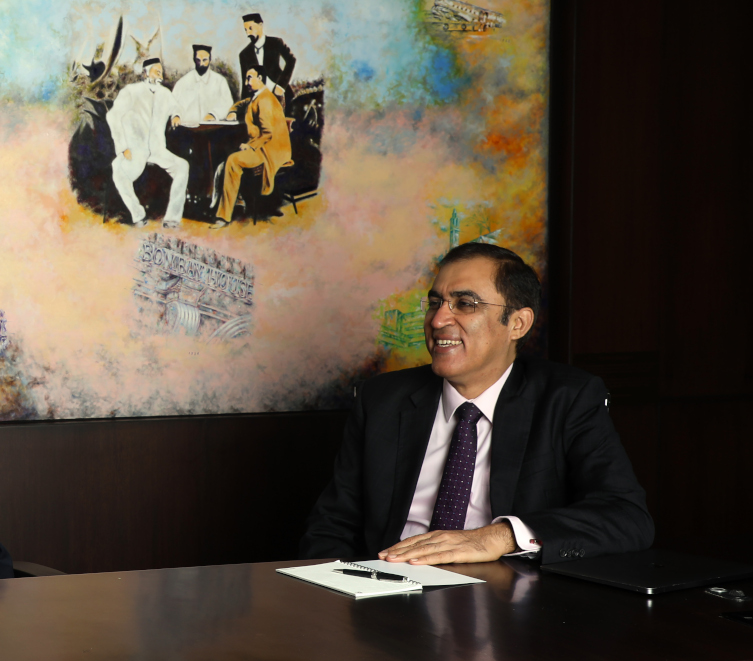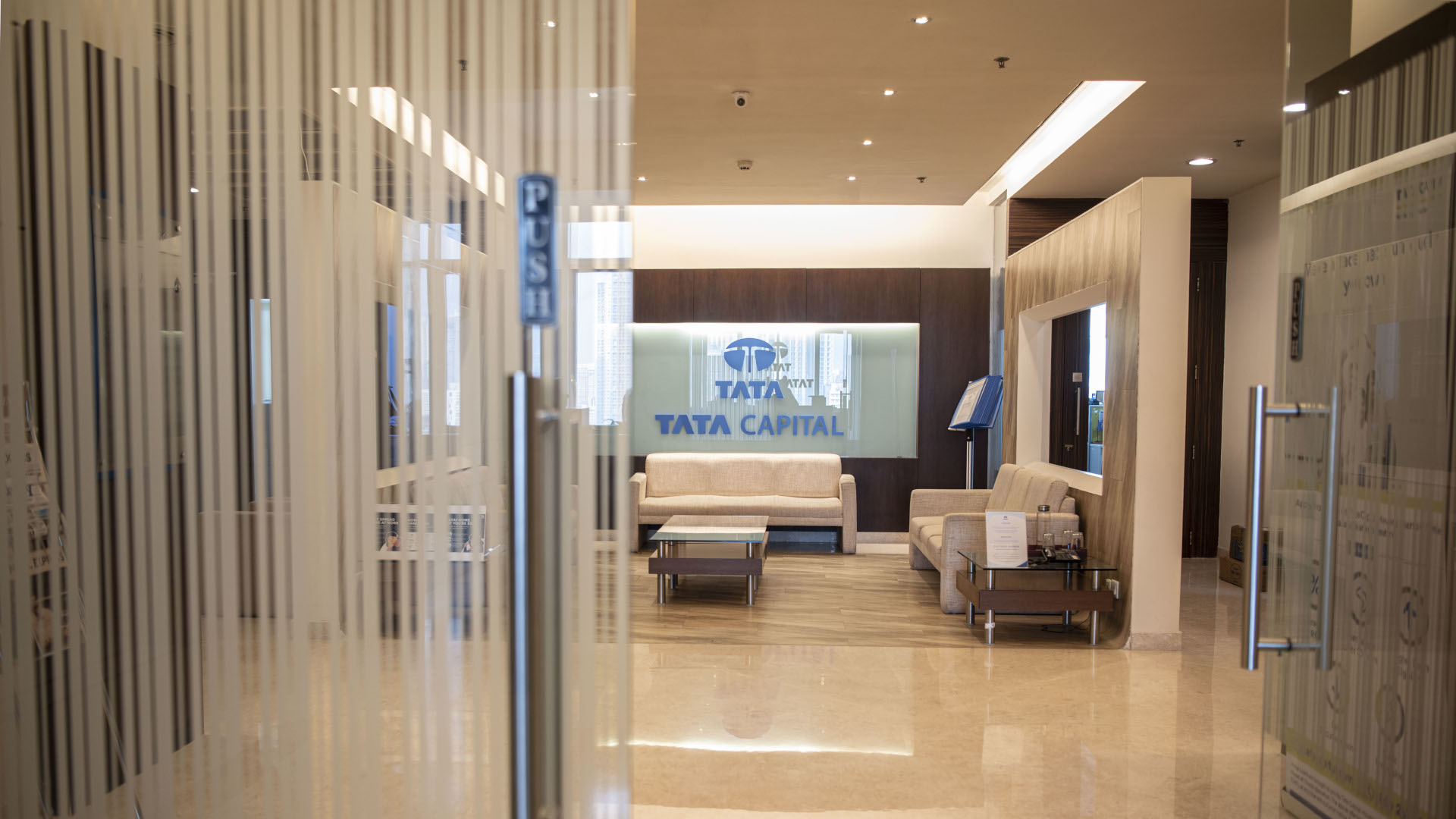November 2023 | 1687 words | 6-minute read
In 2022, Tata Capital reported its highest-ever net profit, and crossed the coveted Rs 1 lakh crore loan book milestone (currently it is at ~ Rs 1.35 lakh crore). It is the latest triumph in a long list of wins for this 15-year-old company, which is now India’s third largest diversified non-banking financial company (NBFC) with a pan-India presence, offering a portfolio of 25+ products and services.
“Despite significant headwinds over the past few years, we have held our ground and grown steadily,” says Rajiv Sabharwal, Managing Director and Chief Executive Officer, Tata Capital. “FY23 was a banner year in terms of our financial performance. We reported multiple ‘highest evers’, such as our disbursements (Rs 75,099 crore, up by 42% YoY) and our PAT (Rs 2,975 crore, up by 80% YoY), along with a healthy ROA of 2.9%. At the same time, we have ensured that we adhere to strong risk-management practices that have allowed us to retain superior asset quality. As of March 2023, our asset quality was among the lowest in the industry with net non-performing assets at 0.4% and total credit costs at 0.5%.”
Tata Capital has also strengthened its geographical footprint across the country, crossing 500 branches in July 2023, with 171 branches added in FY23 alone. The company’s ambitions have been driven by its investments in building a risk culture across the organisation, the use of data and analytics for decision-making across the lending value chain, investments in creating a strong technology architecture and building best in class digital capabilities.
Fulfilling India’s aspirations
The Indian economy is set to become the world’s third largest economy in the next five years and the country’s financial services sector is preparing itself to support the exponential growth. There is significant room to grow when it comes to India’s consumer lending space, given that credit penetration in the country is still well below ~30% (as per TransUnion CIBIL). “Efforts by the Indian government and regulators have led to a steady improvement in access to credit across regions and income segments,” says Mr Sabharwal. “I expect this trend to continue driving double-digit growth in retail lending in the coming years. And Tata Capital is well-positioned to act as a trusted partner to enable this growth.”
Tata Capital is one of the few pan-India, diversified players in the industry to have products across the spectrum — from personal loans, two-wheeler loans, and used car loans to business loans and microfinance loans, among others. “Our focus is to continue nurturing our high-margin, sustainable business lines and grow them at an industry-leading pace to maximise profitability and shareholder returns,” says Mr Sabharwal. “We balance this with healthy growth in our secured product portfolio, in products such as home loans and loans against property, with an aim to maintain our secured book at over 70% going forward.”

“Our focus is to continue nurturing our high-margin, sustainable business lines and grow them at an industry-leading pace to maximise profitability and shareholder returns. We balance this with healthy growth in our secured product portfolio, in products such as home loans and loans against property, with an aim to maintain our secured book at over 70% going forward.”—Rajiv Sabharwal, Managing Director and Chief Executive Officer, Tata Capital
The company taps into new opportunities through product expansions to target newer segments, introducing new products or widening access to products in deeper markets. For instance, “we have ventured into low-ticket personal loans and business loans on direct online channels, enabling seamless disbursals at industry-leading turnaround times,” says Mr Sabharwal. The company has expanded its unsecured and vehicle finance segments by entering into more ecosystem partnerships. The company is also working on launching education loan offerings this financial year, with an eye on making higher education accessible across income groups.
“Our two-pronged phygital model, with a focus on branch expansion and enhanced digital journeys across products, positions us strongly to further capitalise on the India opportunity in the coming years,” says Mr Sabharwal.
Customised enterprise offerings
Tata Capital has offered enterprise lending products since inception, so it is no surprise that it has a significant presence of more than 15% of its book in the segment. While the company started with traditional products like term loans and construction finance, it has evolved to offer a more tailored approach in relationship and risk management.
Given the rising capital expenditure and the government’s push for investments and infrastructure development, the company is well poised to tap into the corporate and SME lending opportunity in the country. “Companies are responding to heightened demand and increased capital-raising activity for both capacity augmentation as well as working capital,” says Mr Sabharwal. “This will be further supported by the government’s commitment to investment in infrastructure projects forming 3.3% of the FY24 Union Budget, as well as to attract private and foreign investments by way of production-linked incentive schemes with an outlay of ~ Rs 2 lakh crore across 14 key sectors.” Over the next few years, Tata Capital plans to tap into existing clients’ cross-sell opportunities and acquire new clients within sectors with established cashflows.
In the corporate sphere, Tata Capital’s cleantech finance business is one of its unique offerings. “We are one of the few large players in India focused solely on financing green projects and were the first Indian entity to join the global Green Bank Network,” says Mr Sabharwal. “Growing our cleantech finance portfolio is a focus area as it will help us support national Sustainable Development Goals.”
A digital revolution
The use of technology is at the core of Tata Capital’s business — and, the company believes, potentially the only way to differentiate and outgrow competition. Over the past few years, it has made focused efforts to leverage digital as a business catalyst, experience driver, and an efficiency enabler.
“We’re a digital-first, data-driven organisation and we will continue to invest and create best-in-class digital platforms and products. We have achieved end-to-end digitalisation of most of our customer journeys, helping us provide a seamless customer experience and increase the share of direct-to-customer business,” says Mr Sabharwal. Currently, over 95% of its customers are onboarded through digital platforms, over 87% of customer service interactions take place digitally and 96% of payments happen digitally. The brand continues to experiment with new technologies and has launched a number of industry-first products and solutions such as digital journeys for working capital loans, instant top-up for mortgage customers, use of servicing through WhatsApp and more. The continued use of machine learning and artificial intelligence across the organisation for servicing customers and for creation of scorecards in underwriting and collection have helped in enhancing efficiency and productivity. Tata Capital is also actively engaged with the fintech ecosystem and partners with 100+ players for sourcing, servicing and underwriting processes.

“In the financial services sector, long-term success will be determined by how data is used in conjunction with digital,” says Mr Sabharwal. “Our in-house centre of excellence promotes a data-led approach for every decision and identifies and institutionalises use cases that can give the company a head start, both on the customer facing side as well as internally. We have integrated deep analytics across the customer lifecycle and as a result have been able to improve our customer conversion rates, cross-sell metrics, increase the share of straight-through decision-making and enhance our collection efficiency.”
Tata Capital also leverages data sciences for risk and portfolio monitoring — which is critical for taking prompt action, both preventive and curative, to maintain asset quality and control credit costs. “The use of data analytics across the organisation has helped us in many ways, such as increasing productivity across the organisation, improving the quality of underwriting across segments, enhancing our debt servicing capability, and improving customer retention and NPS scores,” says Mr Sabharwal. The company’s efforts were recognised at JRD Quality Value 2023, where it won the Significant Adoption of Data Excellence and Industry Leader awards. The awards are given basis the Tata Business Excellence Model, which is a framework used to assess the maturity of business processes and results.
Spearheading financial inclusivity
Over the past decade, the industry has seen an increase in efforts to promote financial inclusion till the last mile. “We believe we can contribute in a commercially viable manner through our offerings, such as affordable housing and microlending, targeted at the low-income segment in deeper markets,” says Mr Sabharwal. These efforts are paying off — Tata Capital’s affordable housing portfolio is currently over Rs 3,400 crore and has served ~22,000 customers till date. The company’s microfinance portfolio has enjoyed similar success. Since its launch in FY22, it has served ~2.2 lakh customers, while its loan book from this business is currently over Rs 700 crore. The company has ~250 microfinance branches across 11 states, with an emphasis on Tier 3 and 4 markets.
Leveraging group synergies
Tata Capital has also tapped into the business potential within the Tata group, working closely with 60+ group companies. It has built a book of ~ Rs 9,000 crore with ~3 lakh Tata group family customers. “The rapid expansion of the group’s footprint — be it in aviation, digital commerce, automotive, or defence — has set the stage for further partnerships between Tata Capital and the group’s ecosystem: partners, employees, vendors, and customers (B2C as well B2B),” says Mr Sabharwal. “This is one area in which we want to expand quickly and go deeper in order to become the ecosystem’s go-to financier.”
Going public
A big milestone coming up is the company’s public listing (all NBFCs identified in the ‘upper layer’ need to mandatorily list by September 2025). Preparations include organisational restructuring — the merger of Tata Capital with its operating subsidiaries, Tata Capital Financial Services and Tata Cleantech Capital — and an expansion of its board. “We wanted to simplify our organisational structure, which is value accretive, and at the same time improve operational and management efficiencies by streamlining business operations and decision-making processes,” says Mr Sabharwal. “These operating companies have a proven track record in their areas of businesses and, post-merger, Tata Capital will become a larger unified entity with a wider and stronger capital and asset base. Parallelly, we are engaging with the right partners to define a clear road map to take Tata Capital public and get the best out of this opportunity for all stakeholders.”
—Anuradha Anupkumar





















